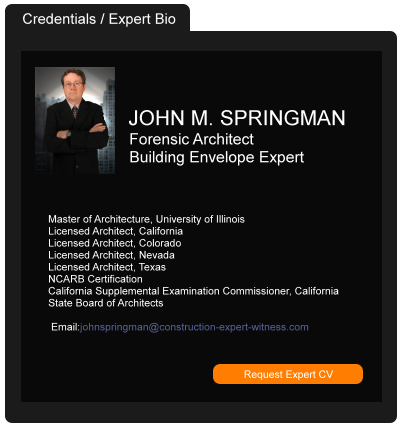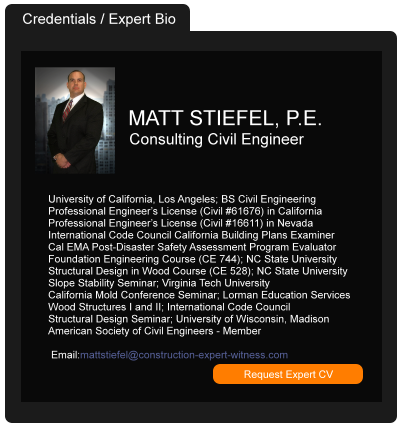The Risks and Rewards of Sustainable Building Design
July 25, 2021 —
Caroline A. Harcourt & Adam Weaver - Gravel2GavelThe shift towards a “greener” environment has resulted in cities and states implementing electrification mandates, which will have a major impact on both current and future building design. Currently, most commercial and residential end users are already all-electric. However, there are some exceptions, such as space and water heating, that use a significant amount of energy. Several states, including California and New York, have cities that have introduced legislation requiring new construction to be all-electric. This means, for example, using electricity for heating rather than fossil fuels such as natural gas. Mandate or not, building owners and developers should consider the risks and rewards of an all-electric design.
General Rewards
- Reaching Climate Goals: As part of the Clean Energy Plan, as described in a previous post, President Biden has created a goal for the United States of achieving a carbon pollution-free American utility sector by 2035. Because residential and commercial building account for 40 percent of energy consumption in the United States, all-electric building designs will help governments and businesses reach the ambitious climate goals that have been set for the coming years.
Reprinted courtesy of
Caroline A. Harcourt, Pillsbury and
Adam Weaver, Pillsbury
Ms. Harcourt may be contacted at caroline.harcourt@pillsburylaw.com
Mr. Weaver may be contacted at adam.weaver@pillsburylaw.com
Read the court decisionRead the full story...Reprinted courtesy of
Where Breach of Contract and Tortious Interference Collide
January 11, 2022 —
Christopher G. Hill - Construction Law MusingsClaims for breach of contract are numerous in the construction law world. Without these claims we construction attorneys would have a hard time keeping the doors open. A 2021 case examined a different sort of claim that could arise (though, “spoiler alert” did not in this case) during the course of a construction project. That type of claim is one for tortious interference with business expectancy.
In Clark Nexsen, Inc. et. al v. Rebkee, the U. S. District Court for the Eastern District of Virginia gave a great explanation of the law of this type of claim in analyzing the following basic facts:
In 2018, Clark Nexsen, Inc. (“Clark”) and MEB General Contractors, Inc. (“MEB”) responded to Henrico County’s (“Henrico”) Request for Proposals (“RFP”) for the design and construction of a sport and convocation center (the “Project”). Henrico initially shortlisted Clark and MEB as a “design-build” team for the Project, but later restarted the search, issuing a second RFP. Clark and MEB submitted a second “design-build” proposal, but Henrico selected Rebkee Co. (“Rebkee”) for certain development aspects of the Project. MEB also submitted proposals to Rebkee, and Rebkee selected MEB as the design-builder for the Project. MEB, at Rebkee’s request, solicited proposals from three design firms and ultimately selected Clark as its design partner. From December 2019 to May 2020, Clark and MEB served as the design-build team to assist Rebkee in developing the Project. In connection therewith, Clark developed proprietary designs, technical drawings, and, with MEB, several cost estimates. In February 2020, MEB submitted a $294,334.50 Pay Application to Rebkee for engineering, design, and Project development work. Rebkee never paid MEB. Henrico paid MEB $50,000.00 as partial payment for MEB’s and Clark’s work. MEB then learned that Rebkee was using Clark’s drawings to solicit design and construction proposals from other companies. On July 23, 2020, Rebkee told MEB that Henrico directed it to cancel the design-build arrangement with MEB and Clark and pursue a different planning method. MEB and Clark sued and Rebkee for, among other claims, tortious interference with a business expectancy. Rebkee moved to dismiss the tortious interference claim.
Read the court decisionRead the full story...Reprinted courtesy of
The Law Office of Christopher G. HillMr. Hill may be contacted at
chrisghill@constructionlawva.com
Tenants Who Negligently Cause Fires in Florida Beware: You May Be Liable to the Landlord’s Insurer
May 13, 2019 —
Rahul Gogineni - The Subrogation StrategistIn Zurich Am. Ins. Co. v. Puccini, LLC, 2019 Fla. App. LEXIS 1487, 44 Fla. L. Weekly D 383, Florida’s Third District Court of Appeals considered whether a landlord’s carrier, Zurich American Insurance Company (Zurich), was precluded from pursuing a subrogation claim against the landlord’s tenant, Puccini, LLC (Puccini), for fire-related damages. After the fire, Zurich paid its insured, Lincoln-Drexel Waserstein, Ltd. (Lincoln), over $2.1 million. Zurich then proceeded with an action against Puccini. Puccini filed for summary judgment arguing that it was an additional insured under the Zurich policy. The trial court agreed with Puccini and dismissed the action. Zurich then appealed the case to Florida’s Third District Court of Appeals. Finding that the lease contemplated both liability on the part of the tenant and indemnification in favor of the landlord, the court held that the tenant was not an implied co-insured under Zurich’s policy. Thus, the court allowed Zurich’s subrogation action.
The Sutton Doctrine Extension of the Anti-Subrogation Rule
In the United States, most states have adopted an anti-subrogation rule either by statute or through common law. Under an anti-subrogation rule, an insurer may not pursue its insured for monies paid to the insured. While some states limit their anti-subrogation rule to apply only to the named insured, other states have expanded the rule to include parties listed as additional insureds, and even, in some instances, implied insureds (those parties not specifically listed, but still considered an insured under the applicable policy).
Read the court decisionRead the full story...Reprinted courtesy of
Rahul Gogineni, White and Williams LLPMr. Gogineni may be contacted at
goginenir@whiteandwilliams.com
Presidential Memorandum Promotes Reliable Supply and Delivery of Water in the West
November 14, 2018 —
Anthony B. Cavender - Gravel2GavelIn a Memorandum dated October 19, 2018 and entitled Promoting the Reliable Supply and Delivery of Water in the West, the President has directed the Secretaries of the Interior and Commerce to work together to minimize “unnecessary regulatory burdens and foster more efficient decision-making” so that major federal water projects are constructed and operated in a manner that delivers water and power in an “efficient, cost-effective way.” More specifically, they will take steps to streamline the western water infrastructure regulatory processes and remove unnecessary burdens in accordance with the timetables set forth in the Memorandum.
Read the court decisionRead the full story...Reprinted courtesy of
Anthony B. Cavender, PillsburyMr. Cavender may be contacted at
anthony.cavender@pillsburylaw.com
COVID-19 Business Interruption Claims Four Years Later: What Have We Learned?
September 23, 2024 —
Patrick McKnight - The Dispute ResolverFour and half years ago the COVID-19 pandemic spread around the globe, bringing with it interesting, but challenging, legal problems for construction attorneys. Construction projects ground to a halt. Ever-changing guidance from authorities ranging from the U.S. Department of Labor to local health authorities resulted in a web of evolving obligations for general contractors and subs alike. One of the most closely watched legal questions was the wave of business interruption claims filed by plaintiffs, many of whom owned businesses impacted by government shutdowns. During the opening months of the pandemic, I
noted that hundreds of business interruption claims had been filed by insureds across the country. At that time, the only thing certain was that although the outcome remained unknown, virus exclusions were likely to become more likely in the future. Needless to say, much has happened since early 2020.
What does the data say about the outcome of business interruption claims?
In sum, plaintiffs have had an uphill battle. A helpful resource for analyzing the outcome of business interruption suits is the
Covid Coverage Litigation Tracker (“Tracker”), an insurance law analytics tool offered by Penn Carey Law of the University of Pennsylvania. According to its website, “[t]he Covid Coverage Litigation Tracker is a multi-sourced database and dashboard through which to view the unfolding insurance litigation arising out of the pandemic in federal and state courts. Widely cited in briefs, judicial opinions, and the press, the tracker also serves as a proof of concept for new methods to identify, track, and understand emerging case congregations in real time.”
Read the court decisionRead the full story...Reprinted courtesy of
Patrick McKnight, Fox Rothschild LLPMr. McKnight may be contacted at
pmcknight@foxrothschild.com
Ten ACS Lawyers Recognized as Super Lawyers or Rising Stars
August 30, 2021 —
Cameron Sheldon - Ahlers Cressman & Sleight PLLCACS is very honored and pleased to announce ten members of our firm were awarded the distinction of top attorneys in Washington. Our blog articles usually cover Construction Legal News, but we feel this is a newsworthy accolade to be shared with friends and clients.
To become candidates to receiving the Super Lawyer nomination, lawyers are nominated by a peer or identified by research. After completing this first step in the process, Super Lawyer’s research department analyzes 12 indicators, such as experience, honors/awards, verdicts/settlements, and others. As for the third step, there is a peer evaluation by practice area. Finally, for step four, candidates are grouped into four firm-size categories. In other words, solo and small firm lawyers are compared only with other solo and small firm lawyers, and large firm lawyers are compared with other large firm lawyers. The process is very selective and only 5 percent of the total lawyers in Washington are nominated as Super Lawyers.
John P. Ahlers, one of the firm’s founding partners, was recognized as
the third Top Lawyer out of all Washington lawyers in the State.
Named partner Scott R. Sleight and partner Brett M. Hill were both recognized as one of the 100-Best Lawyers in the State.
Read the court decisionRead the full story...Reprinted courtesy of
Cameron Sheldon, Ahlers Cressman & Sleight PLLCMs. Sheldon may be contacted at
cameron.sheldon@acslawyers.com
Just a House That Uses 90 Percent Less Energy Than Yours, That's All
August 20, 2014 —
Amelia Hennighausen – BloombergActive City, Passive House
From the tallest skyscraper to the humblest suburban abode, the buildings that we live and work in draw about 70 percent of the nation’s annual electricity. They burn more than a quarter of the natural gas the U.S. consumes every year.
They eat all that energy for a simple reason: They were designed to. But that needn’t be the case in the future.
Enter the “passive house,” a kind of super-efficient building that’s highly insulated, heated mostly by the sun and sealed air-tight. It is, in other words, an energy trap.
Read the court decisionRead the full story...Reprinted courtesy of
Amelia Hennighausen, Bloomberg
New Jersey’s Independent Contractor Rule
January 07, 2015 —
Christopher G. Hill – Construction Law MusingsFor this week’s Guest Post Friday here at Musings, we welcome back Bennet Susser. Bennet is a founding member and shareholder of the New Jersey law firm, Jardim, Meisner & Susser, P.C. He has over 25 years’ experience in representing clients in all types of complex (and not so complex) litigation, including those involving construction actions. His Construction Law Practice Group has deep experience in the representation of property owners, developers, homeowners, design professionals, materials manufacturers, contractors and subcontractors in connection with construction of high-rise and other residential developments, condominium conversions of older rental properties, commercial property, mixed-use projects, and governmental buildings. Issues handled include: construction defects and deficiencies related to residential and commercial construction, including roofing defects, water intrusion, and structural life safety; construction delays; liens; hurricane recovery and rebuilding; insurance coverage disputes, including negotiation and resolution of insurance claims related to rebuilding; mold and mildew claims; and construction contracts and related documents, including loan documentation.
Construction litigation often seeks to foist the culpable conduct of contractors and subcontractors upon an owner or developer of commercial or residential real property. Sometimes, such conduct is warranted, especially when the owner/developer has a significant role in the manner in which the construction project work is to be conducted. However, there are times when the general contractor is the party calling the shots. Why should an owner/developer be charged with the conduct of other independent contractors over whom no control was exercised? Under certain circumstances, such party may be insulated from liability based on the “independent contractor rule.” Put another way, general contractors’ and subcontractors’ status as independent contractors do not impute liability to an owner/developer for their alleged wrongful conduct under the principles of respondeat superior and vicarious liability.
Read the court decisionRead the full story...Reprinted courtesy of
Christopher G. Hill, Law Office of Christopher G. Hill, PCMr. Hill may be contacted at
chrisghill@constructionlawva.com


































































